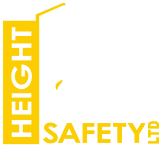Based on information from the MBIE, in 2015 falls from height led to 18% of the total costs of injury for the construction industry. This represents a large reduction from the 2009 figure of 27%, but definitely outlines the importance of planning and safety when working at height regardless of your sector. More than 50% of falls are from less than three metres. Approximately 70% are from ladders and roofs.
You are working at height any time where you could be injured by falling from one level to another. Regulation 21 of the Health and Safety in Employment Regulations 1995 describes the care required when there is a risk of falling more than 3 metres. This is commonly misinterpreted to mean that you are only working at height if you’re more than 3 metres off the ground.
How far is too far?

If there is a possibility that you could fall and injure yourself, then you are working at height. The actions you can take to be safe at height varies with the height you are at, but make no mistake: you are working at height. When considering the safety equipment to use, you should include the height work in your safety analysis, and work towards an acceptable level of risk.
Working off an unsecured ladder for example, carries a higher risk. The ladder could topple over, or the user could lose their footing and fall off the ladder. Could you substitute the ladder for a working platform? This offers the user a firm place to stand, and guard rails to prevent falling. If the area is highly trafficked, should you install a fixed ladder with an attachment system? We can install ladders with a fall arrest rail built in, or retrofit fall arrest systems to existing fixed ladders.
There is no definite measurement to define working at height other than good job safety analysis. Any time you step up on a chair or table in your workplace, you could be putting yourself at risk of significant injury ranging from sprains and strains, all the way through to broken bones and severe, life-changing injuries.
What options do I have to stay safe at height?
Fixed Scaffolding
When working on large projects that require comprehensive coverage on multiple levels, fixed scaffolding is a good option. It allows many people to work in the same areas with reasonable weight capacity, and without entanglement with other attachments. Fixed scaffolding could also include scaffolding rigged as edge protection. Sometimes there is existing access to a rooftop, but movement near edges needs to be restricted.
Mobile Scaffolding
This option is particularly useful when working with few people. Unlike fixed scaffolding, the mobile version can be set up by anyone, and moves when you want it to. Height Safety has a hire unit for mobile scaffolding available – talk to us about it today!
Platform Ladders
Many workplaces now forbid the use of standard ladders either for working off, or for use in general. An alternative is platform ladders which integrate a solid working platform that a user can stand on with a handrail on three sides. This is a solid option for portable access to high areas. Platform ladders do have a larger ground footprint though and still require the ground to be stable.
Personal Harness and Anchor Point Systems
You can take a harness with you anywhere and establish an anchor point around a structural component. Since all of the components are carried in a bag, they provide the ultimate flexibility when used correctly. Always work in restraint wherever possible so that there is never a chance to fall off the edge. Also take care that you account for the pendulum effect – this option is good for experienced heights workers.
Height Safety also provides hire kits and equipment for this kind of access. We can additionally help with planning the use of it to ensure your safety. Get in touch with us today!
Engineered Safety Systems
Whether you are constructing a new building, or maintaining an existing one, continued access to the roof may be necessary. Cleaning gutters, painting, repairs, maintenance of air conditioning units are all compelling reasons to maintain safe access to the rooftop. Engineered systems come in many different forms, and we design them according to your unique needs. Whether you’re looking for a lifeline system to attach a harness, or a walkway system to prevent contractor damage to your roof, Height Safety has a solution for you. These systems usually have a long lifespan and seldom require more maintenance than an annual inspection.
Fixed Ladders
We also retrofit engineered systems to fixed ladders to prevent falling. Contrary to popular belief, ladder cages attached to vertical ladders do not provide safety. The cage funnels the user downward in case of a fall and prevents them from moving clear of the rungs. A fixed ladder should have a fixed safety system installed on it. We can fit these systems to existing ladders, or install new fixed ladders with the system integrated.
If you are building a new construction, or looking to make an existing one safer, contact us today!


Comments are closed